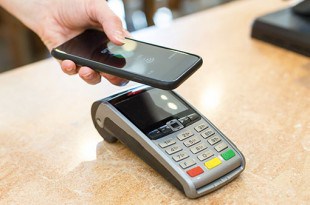Leading one of the latest consumer trends, Apple Pay, the mobile payment system from Apple, went live in late October 2014. The application lets consumers pay at participating retailers using an iPhone 6 or 6 Plus. A fingerprint sensor on the phone, called Touch ID, acts as the authorization mechanism. iPad Air 2 and Mini 3 users can participate as well. Apple Pay employs near field communication (NFC) technology, so users will be able to pay by accessing credit card information located in the phone’s Passbook application. Apple isn’t going to collect payment history or track purchase activity.
Based on available information on consumer trends, early signs of customer adoption appear positive in several big-name retailers in the US. The New York Times reported that Whole Foods registered more than 150,000 Apple Pay transactions across its 384 stores in the first three weeks following launch. McDonald’s reported that more than half of its mobile payment transactions were processed via Apple Pay at its US stores over the same time period. And Walgreens said mobile payments have doubled since the launch.
This could spell trouble for the CurrentC mobile pay application project currently under development by the Merchant Customer Exchange (MCX), which is a consortium of large retailers spearheaded by Walmart. Participant retailers include Target, Best Buy, CVS, Shell Oil, Darden Restaurants, HMSHost, Hy-Vee, Lowe’s, Michaels, Publix Super Markets, and Sears.
In theory if enough retailers adopt the CurrentC system, they could avoid paying the 2 to 3 percent credit card fees by processing payments through Automatic Clearing House (ACH) transactions through banks charging smaller fees. CurrentC would also help retailers by encouraging loyalty and providing customer intelligence.
The news is Apple has been such a commercial juggernaut over the past few years, that based on consumer trends MCX should be concerned that CurrentC will be obsolete before it is even launched. Here is a brief comparison of the two systems and a summary of the current situation.
The Good
As proposed the CurrentC application has a number of features that aren’t available (yet) from Apple Pay:
- iOS and Android applications are currently available in the app stores, but can only be used by people with an “invite code.”
- Users will be able to add retailers’ loyalty credit cards or gift cards as payment methods.
- Rather than transmitting financial data, transactions trigger the transmission of a token placeholder. This is then securely converted by the financial institution to process the ACH payment and charge the user.
- CurrentC includes a merchant map for finding participating retailers.
- Discounts and coupons will be automatically applied to the purchase, and any loyalty program points will be automatically added to the customer’s account.
The Bad
The payment process with CurrentC will be comparatively time consuming. Users have to open their phones, open the CurrentC application, open the scanner, scan the code provided by the cashier, and wait for the transaction to be confirmed. That will undoubtedly be more annoying and less secure than paying with a credit card. It is certainly much more complex than a Touch ID verification and tap on Apple Pay.
The Ugly
Apple Pay is already hitting the mainstream, while CurrentC is still under development. This will make it much more difficult for CurrentC to establish itself as the “go to” mobile payment application. While CVS and Rite Aid have already declined to offer Apple Pay, Meijer announced that it will support both systems.
Android has been using NFC technology for payments for over three years and consumer trends indicate is already a success in markets such as Japan, South Korea, Taiwan, and Hong Kong. CurrentC uses quick response (QR) codes displayed on a cashier’s screen. QR codes are widely viewed as “old” technology.
iPhone aficionados are trashing CurrentC in app store reviews. Here are two of the more reasoned comments:
“I want a unified receipt. I also want my credit card connected to my loyalty card—one swipe, no key rings. But I also want to pay with my credit card. ACH is checking account only. Starbucks has had the best solution for years, except that it’s tied to basically your gift card. If Apple can get loyalty and receipts integrated, it’s over. I’m already considering leaving CVS permanently now, and I’m not even an iPhone 6 user yet. The next twelve months could be very interesting in the retail payment space.”
“It is not just that it [CurrentC] uses QR codes that makes it bad, but because it ties directly to your checking account. Now I do not know about you, but I will NOT trust any retailer with direct access to my checking account. We have seen how that has played out with PayPal where resolving issues is a pain. But we also know that retailers do not keep their systems clean from malware. Plus skimmers are a real problem as well. Systems like Apple Pay resolve these issues. This system [CurrentC] is like going back to the 1990s in technology, not moving forward.”
Nobody knows exactly what is going to happen. But it’s hard to bet against Apple, and perhaps a bit foolhardy to bet against the wishes of the consumer—especially as it relates to his or her pocketbook.
This article was first published in January of 2015 and updated in December of 2015.
Editor’s Note: With mobile now driving many Google searches consumer trends indicate that mobile payment apps are continuing to grow in popularity as we move forward into 2016. Innovative mobile payment apps leading the change in mobile commerce include innovative mobile payment platforms, social peer-to-peer payment apps, digital wallets, payment apps for wearable devices, and alternative payment systems for mobile customers.


